Students and Lab Alumni – updated semi-regularly
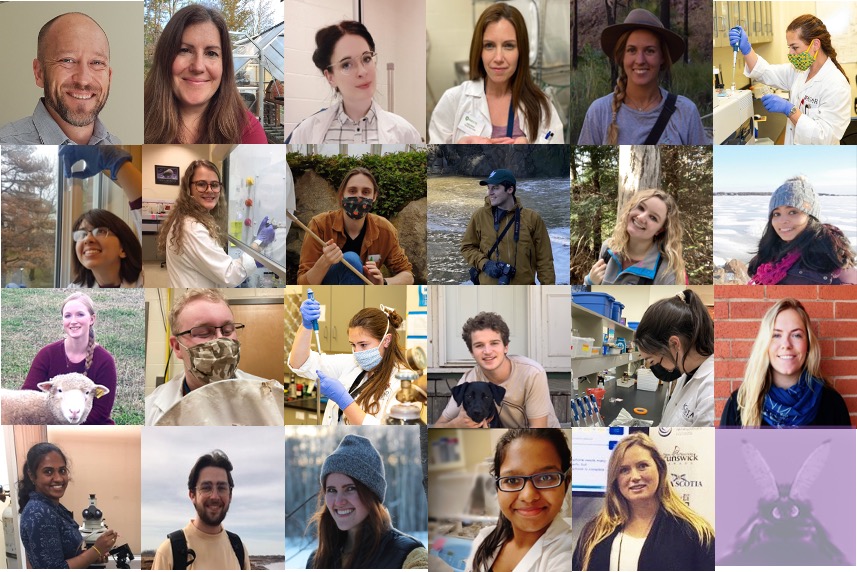
Hillier Lab 2021 Left to Right: Hillier Lab 2021 (Left to Right) Top Row: Dr. Kirk Hillier, Wendy Hillier, Dr. Sarah Koerte, Angie Moore, Taylor Swanburg, Nicoletta Faraone 2nd Row: Victoria Ivey, Grace Bowen-MacLean, Luca Voscort, Cody Chapman, Kayla Gaudet, Sandunika Mullegama, 3rd Row: Emma Rand, Tyler Peskett, Sarah Hobbs, Noah Johnson, Georgia Condran, Frederica Jacks 4th Row: Thanusha Suresh, Andrew Lawrence, Kate Storey, Kevindi Gunasekara, Meghan Swanburg
See Bios below for more information!
Lab Students and Staff

Wendy Hillier (Lab Manager) Hello! My name is Wendy. I am the lab manager in the Hillier lab. I work together with our large team of technicians, students and staff to keep the day-to-day operations running smoothly. I train technicians and supervise the care and maintenance of insect colonies and plants. I help coordinate personnel and supplies required for research projects and industry partner projects. Currently, I am very excited to be working on repellency bioassays using Drosophila melanogaster, (Common vinegar flies we see on our fruit and in our drinks during the warmer months of the year in Nova Scotia), in collaboration with Memorial University of Newfoundland. This project that brings me back to where I completed my undergraduate degree in the year.......let’s just say, many years ago! I look forward to working with our incredible students, technicians, staff, collaborators and industry partners every day!
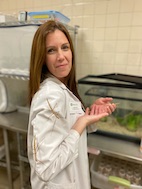
Angie Moore (Lead Insect Care Technician) My role in the Hillier lab based within the Animal Care facility, and the Acadia University Quarantine Insectary. My main role is rearing and maintaining our many insect colonies that are used for numerous experiments and bioassay research. This includes a myriad of domestic insect pests, as well as exotic insect species from all around the world! Our facility provides pivotal support for a wide array of projects investigating the impacts of invasive species, integrated pest management, development of pheromones and repellents, and fundamental studies of insect evolution. We maintain a huge array of pest species, including Heliothine moths (corn earworms and tobacco budworms), armyworms, spruce budworm, diamondback moths, Drosophila flies, wheat midges, thrips, squash bugs, wasps, and even walking sticks!

Meghan Swanburg (Project Manager) Meghan Swanburg has been with the Hillier lab on and off since 2017, managing and supporting all aspects of a multi-year, multi-million-dollar project to develop and commercialize pest management tools using insects' pheromones and other naturally-derived products for the agriculture and forest industries. She is a professional engineer with experience in marine renewable energy, project management and consulting. Meghan lives in Wolfville, Nova Scotia with her partner and three young children.
Lab Alumni
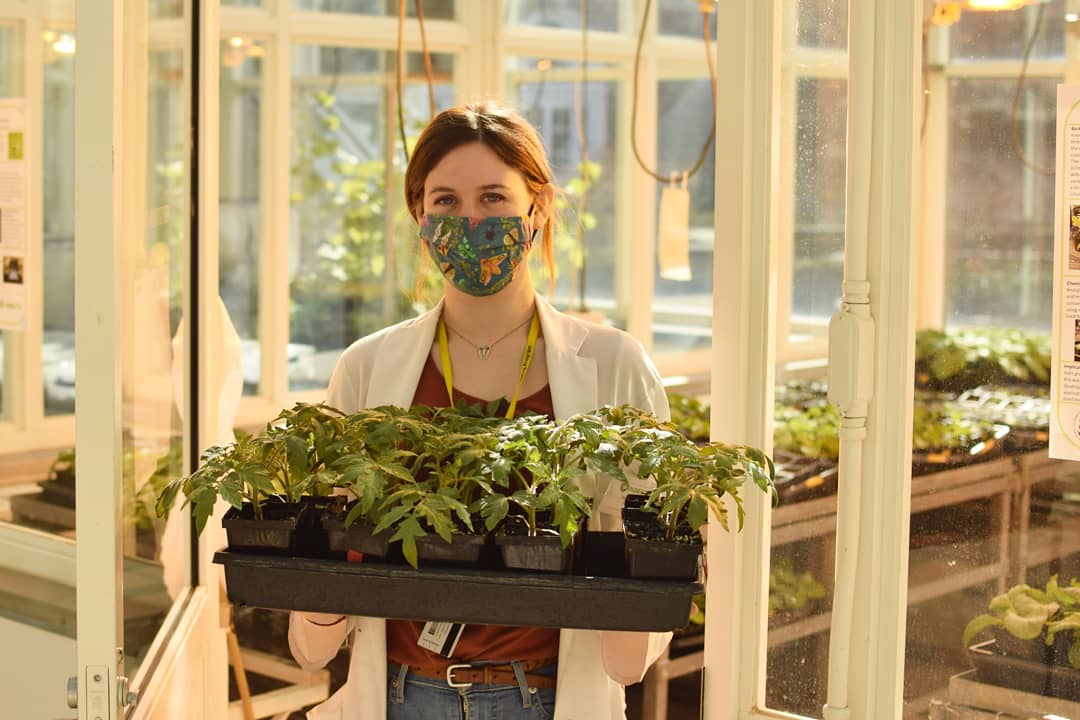
Taylor Swanburg (Technician/M.Sc. Candidate) I have worked as a laboratory technician in the Hillier Lab since 2018, using molecular techniques to determine changes in gene expression in Heliothine moth species. In 2021 I will begin my Masters in the Hillier Lab employing environmental DNA (eDNA) technology to detect and monitor mosquito species throughout Nova Scotia. This will hopefully give insight into downstream impacts of climate change on mosquito populations in the province.
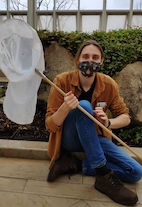
Luca Voscort (Technician/M.Sc. Candidate) I am currently employed in the Hillier Lab as a Research Technician, mainly focusing on rearing plants in the greenhouses and maintaining insect colonies for behavioral bioassays. This summer, I am hoping to start my graduate research at Acadia University in cooperation with Canadian Forest Service (CFS) and Parks Canada. As part of a larger initiative that aims to contain the spread of the invasive Hemlock Woolly Adelgid or HWA (Adelges tsugae), I will investigate potential impacts of basal-bark application of imidacloprid on Eastern Hemlock (Tsuga canadensis) on pollinator communities in Nova Scotia’s old-growth hemlock forests.

Emma Rand (Honours, M.Sc. Candidate) I completed my honours project this past year under the co-supervision of Dr. Kirk Hillier here at Acadia and Dr. Debra Moreau at Agriculture Agri-Food Canada. My honours project investigated the population dynamics and phenology of grape phylloxera (Daktulospharia vitifoliae). Over the summer I had the opportunity to work in the Research Vineyard at the Kentville Research and Development Centre to trap grape phylloxera at their active stage and observe the damage they caused to plants over the season. I am excited to be returning to Acadia and the Hillier lab next year as a Masters student where I will be researching different mosquito species in Nova Scotia, their ability to vector diseases, and how climate change will affect their vector potential.

Sandunika Mullegama (M.Sc. Candidate) My research agenda focuses to determine the functional importance of pheromone autodetection of Heliothine moths. . Heliothine moths represent some of the world’s most important agricultural pest species: Helicoverpa armigera (African Bollworm), Helicoverpa zea (Corn Earworm), and Heliothis virescens (Tobacco Budworm) cause billions in damage and control costs worldwide each year. My research involves using Gas Chromatography- electroantennography (GC-EAD) and GC-Mass Spectrometry (GC-MS) to characterize composition of hairpencil pheromones of male Heliothine moths and using behavioural assays to examine female male behavioral reactions to complete blends.
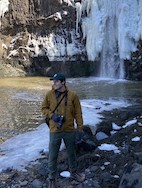
Cody Chapman (M.Sc. Candidate) - After graduating with my BSc in biology from Dalhousie University, I spent two years serving as a forest conservation project coordinator for the Confederacy of Mainland Mi’kmaq - where I developed a keen interest in forest conservation and the harmful impact that invasive species can have on our native ecology. I joined the Hillier lab in autumn 2020 to work on my MSc research investigating the non-target ecological impacts that insecticide control for hemlock woolly adelgid might have on the wild arthropod communities inhabiting old eastern hemlock-dominated forests in Kespukwitk (southwestern Nova Scotia). My research is being conducted as a partnership with Parks Canada through Kejimkujik National Park and National Historic Site.
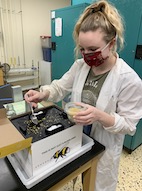
Kayla Gaudet (M.Sc. Candidate) – I completed my BSc in biology at the University of New Brunswick. My research is in partnership with Nutrilife Plant Products Limited, where the focus of my project is to test the efficiency of natural-based products as insecticides, miticides and fungicides. I am using electrotarsogram technology and behavioral assays to identify potential natural-based products that are repellants to the two-spotted spider mite, Tetranychus urticae. I am also investigating the sensitivity of ionotropic receptors to various acids and aldehydes in the two-spotted spider mite. Finally, my project is testing for potential contact toxicity of natural-based products on bumble bees, Bombus impatiens.
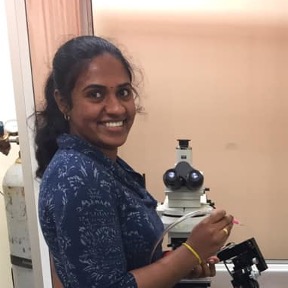
Thanusha Suresh (M.Sc. Candidate) I’m from Sri Lanka and have completed my Bachelor’s degree in Agriculture from the University of Jaffna, Sri Lanka in 2016. I’m now working towards my Masters degree in the field of chemical ecology and neurophysiology of insects, titled “Pheromone and host plant odor detection and processing in spruce budworm, Choristoneura fumiferana”. I’m using single sensillum recording of antennal sensilla for olfactory receptor neuron responses to its pheromones and other host-related stimuli. The findings of my research will provide insights that may be complementary to existing IPM strategies based on the chemical ecology of spruce budworm.

Victoria Ivey (M.Sc. Candidate) After graduating from Cape Breton University in 2019 with a BSc (Honors), I began pursuing my MSc in the Hillier Lab. Currently, I am researching the corn earworm (Helicoverpa zea) a moth which is a major pest of corn and a variety of other important crops. I am using both electrophysiology and molecular biology techniques to understand how exposure to chemicals in moth sex pheromones may affect the responses of their olfactory neurons or the expression of olfactory receptor genes. By learning more about how sex pheromone olfaction works, we can develop new methods to control pest moth populations which are more sustainable than conventional insecticidal control.

Sarah MacKinnon (M.Sc. Candidate Biology/Kinesiology) Sarah Mackinnon (’10) is a master’s student co-supervised by Dr. Kirk Hillier (Biology) and Dr. Scott Landry (Kinesiology). Sarah graduated from Acadia with a BSc in Biology and a BKin, and was part of the Hillier lab team in 2009/2010, studying the role of pheromones in Helicoverpa zea. Sarah is currently working in the John McIntyre motion Laboratory of Applied Biomechanics (mLAB) studying hip extension in running athletes and its role in sprint speed. Sarah is also a Certified Athletic Therapist and Instructor within the Department of Kinesiology at Acadia.
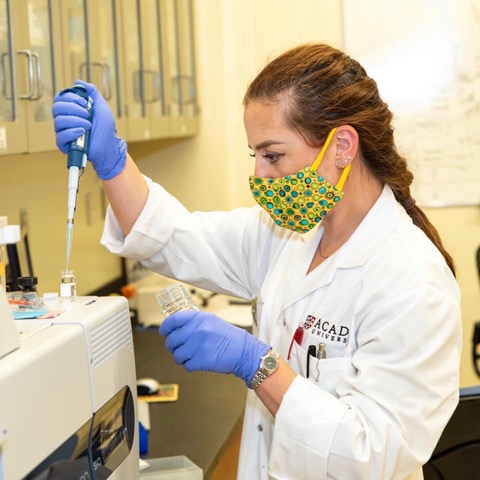
Nicoletta Faraone PhD, I am Nicoletta Faraone, Assistant Professor in Biochemistry, Chemistry Department, Acadia University. I am a Natural Product Chemist with a Ph.D. in Chemical Ecology. My research interests include Natural Products, Chemical Ecology of Ticks, Bioactive molecules, Bio-pesticides, and Pest Management. My research focusses on the discovery of bioactive natural products for pest management and crop protection, and their application in food and health industry. I assist companies for developing and registering new products through Health Canada - PMRA and I became familiar with the pesticide regulations and risk assessment. I teach Biochemistry, Metabolism, and Natural Product Chemistry.
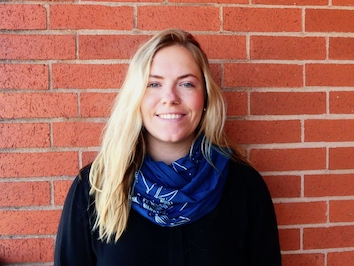
Frederica Jacks, BSc, MREM (Research Assistant/Coordinator) for the Nova Scotia Hemlock Initiative, where she has assisted in writing the provincial management plan for hemlock woolly adelgid, an invasive forest pest. She completed both of her degrees at Dalhousie University; her graduate research focused on benthic invertebrate communities in Sable Island National Park Reserve, and her undergraduate research focused on the relationship between bacterial infection rates, behavior, and physiology of deer ticks.
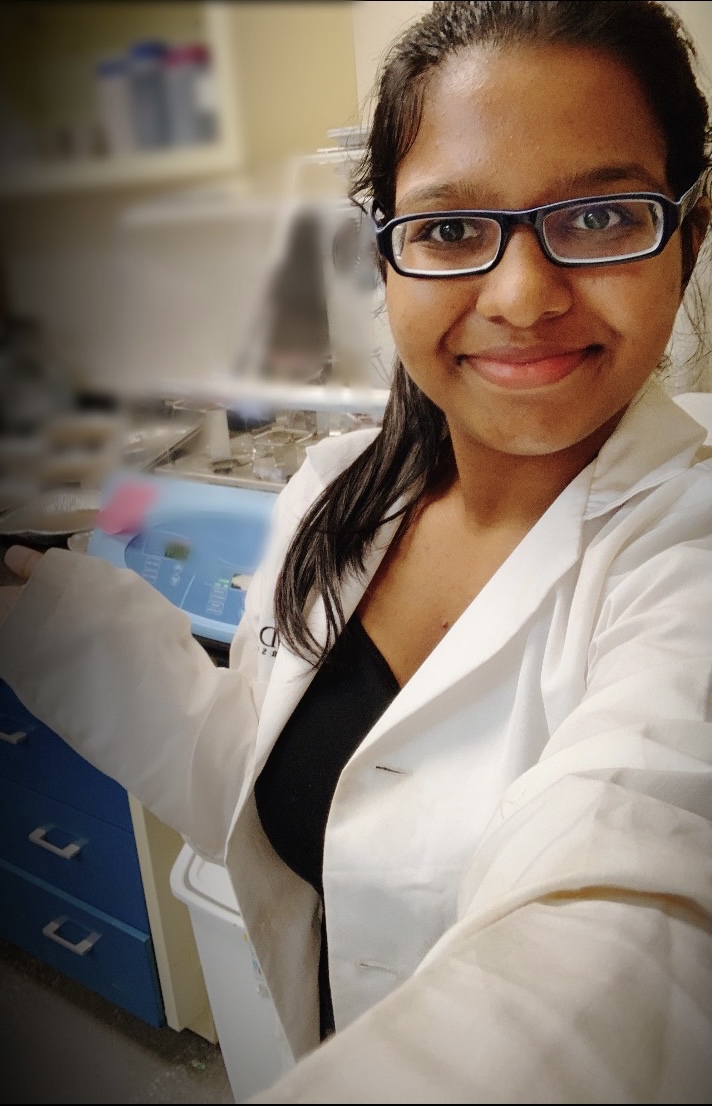
Kevindi Gunasekara (KCIC/Greenhouse Technician) My work is based at the K.C Irving environment facility and in the Animal care facility. My main role in the team is to provide and manage experimental and insect food plant stocks. I also support with maintenance of various insect colonies ranging from diamond back moths, armyworms, and mites for behavioral bioassays. I have previously engaged in research related to soil microbiology, molecular biology, mycology, and plant tissue culture and is looking forwards to integrate my previous research experience into the projects at Hillier lab!
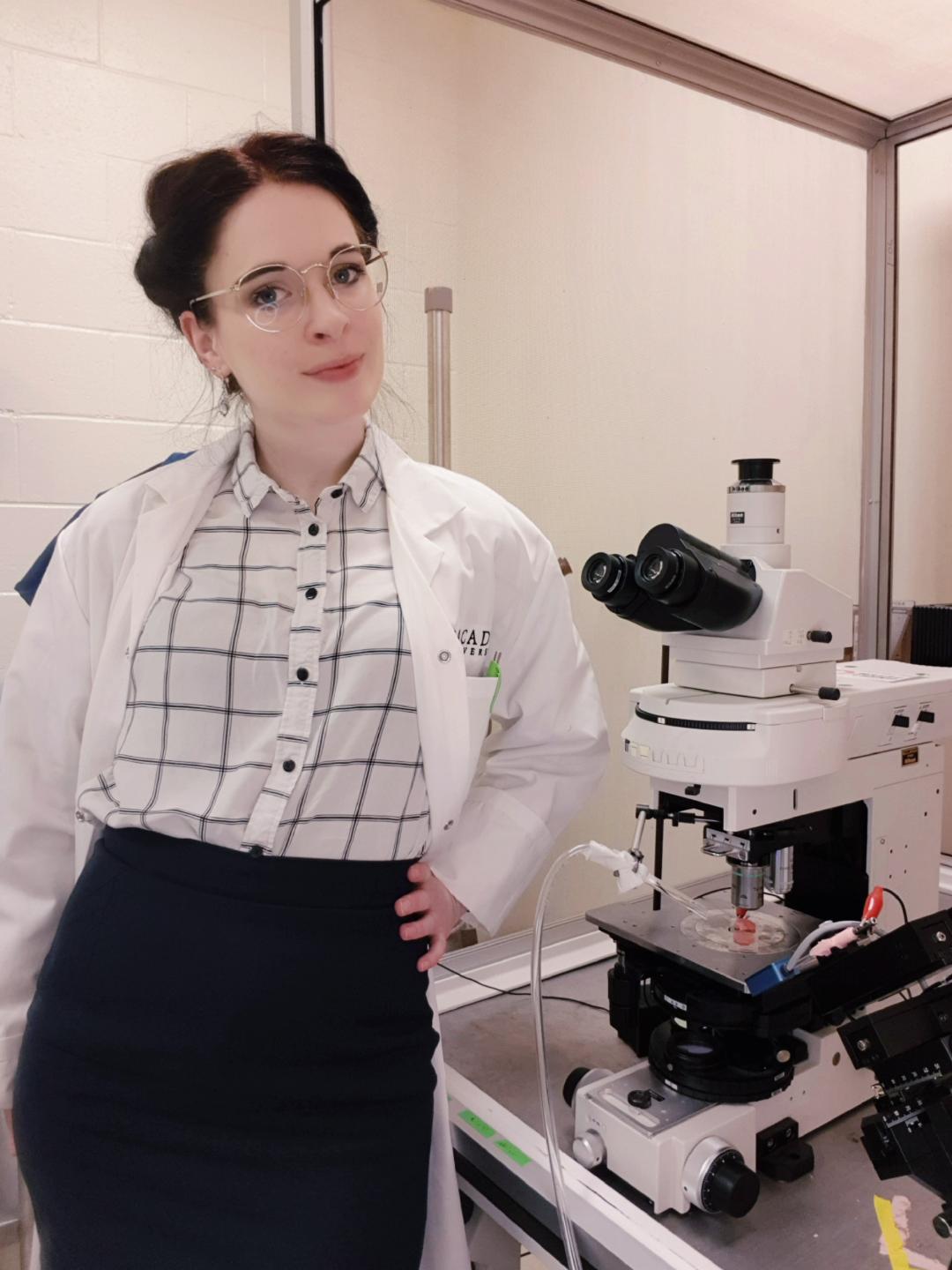
Sarah Koerte, Dr. rer. nat., (Post-Doc Fellow). In my main project I am working on the characterization and the mapping of the pheromone system (detection and processing) in the true armyworm, Mythimna unipuncta (Haworth) (Lepidoptera: Noctuidae) which is a major pest species of cereal and forage crops. Once we have learned more about the mechanisms underlying pheromone detection and processing in M. unipuncta, we want to find out if and how climate change affects the pheromone response in this migratory moth species. Furthermore, I am interested in finding out how the females of M. unipuncta identify a plant as a suitable host for their offspring and if the armyworm uses host marking cues to attract conspecific females to shared oviposition sites. To answer my questions, I am using electrophysiological (Single Sensillum recordings, Electroantennographic detection) and molecular techniques as well as behavioral assays. .

Tyler Peskett (Honours) ) I am going into my fourth year at Acadia where I will be completing my Bachelor of Science as a double major in biology and chemistry. My project is going to focus on examining pheromone preference in in context of reproductive species isolation across related species of heliothine moths. Male heliothine moths will be tested for behavioral (wind tunnel) response to blends of female sex pheromone compounds resembling conspecific blends. These blends will be laced with compounds from congenic allopatric and sympatric populations, or with slightly varied radiometric combinations of components. The second part of my project will be examining the degree of plasticity in pheromone receptor expression by performing pheromone pre-exposure and comparison of receptor expression quantitative polymerase chain reaction (qPCR).

Andrew Lawrence (Honours) I am going into my fourth year at Acadia University with a double minor in Chemistry and History. My research this summer focuses on Long’s Braya, Braya longii, which is an endangered plant species found only in the Great Northern Peninsula of Newfoundland. It is subject to annual infestations of Diamondback moth, Plutella xylostella, whose larvae defoliate and kill Braya plants. Diamondback moths, are major agricultural pests, which are notoriously difficult to manage, due to their high degree of resistance to chemical and biological insecticides. I will study volatile cues emitted by B. longii which attract adult moths to the plant with the overall goal to characterize the chemical cues. These goals include: A) attempt to disrupt this host-finding mechanism, and B) exploit this attraction to develop novel tools for managing P. xylostella.

Sarah Hobbs (Technician/ Undergrad-Co-op) I am a third-year biology undergraduate student at Acadia, and I am currently completing my second co-op term in the Hillier lab. I have had the pleasure of working on a variety of different projects over my last two terms. This semester I have been conducting bioassays to test the repellency effects of essential oils on two-spotted spider mites and green peach aphids. I am also using electrotarsogram technology to understand the sensitivity of two-spotted spider mites to bean and tomato volatiles.

Grace Bowen-MacLean (Honours and Co-op Tech) Hello! I am Grace Bowen-MacLean a 4th year Co-op and honours student at Acadia. I did my honours project research on the settlement choices of the Two-Spotted spider mite based on possible conspecific cues found silk and frass using behavioural assays. I have also worked as a lab tech for 2 co-op semesters!

Kate Storey (Undergrad Technician) I’m a 2nd year bio student at Acadia working in the Hillier lab as a technician. I help the honours and masters students with their projects and preform general lab maintenance. I mainly work with MSc student Cody Chapman to help sort arthropod samples from old eastern hemlock-dominated forests to help better understand arthropod diversity in these habitats.
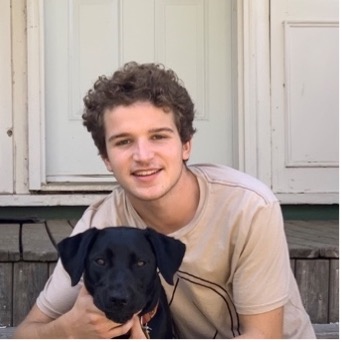
Noah Johnson (Research Topics) I am a fourth year Biology student currently doing a research topics course under Dr. Hiller and Dr. Faraone’s supervision. My project is focused on investigating the acaricidal activity of neem oil on the black legged tick, American dog tick and spider mite. My time has been spent preparing various neem treatments in Dr. Faraone’s lab and testing them out in the pavilion lab as well as in the KCIC building!
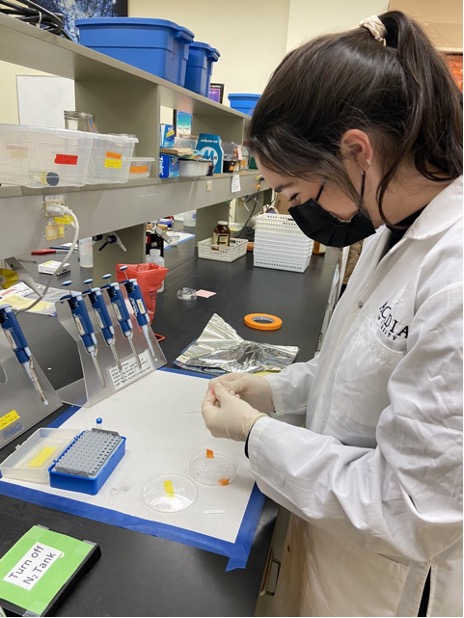
Georgia Condran (Research Topics) Hi everyone! My name is Georgia Condran, and I am a third-year biology student, originally from Ottawa, Ontario. As a research topics student in the Hillier-Faraone lab, I am investigating the effects of repellent compounds on tick olfaction. To facilitate this, I am examining tick sensitivity to attractant compounds, such as butyric acid, before and after exposure to repellent compounds, such as lemongrass. This is being accomplished in an Ixodes scapularis model, using a novel mounting technique in electrophysiology analysis.

Cate Little (Ph.D.) Spotted wing Drosophila (Drosophila suzukii) is an invasive pest of soft-skinned and stone fruits in North and South America and Europe. I am investigating the evolution of olfaction and reproductive behaviour that allow spotted wing Drosophila to compete effectively with native Drosophila species. Cate used electrophysiological and behavioural assays to identify visual and chemical cues used by spotted wing Drosophila for mate attraction and host selection. This was followed up with field testing to capitalize on these evolved olfactory and behavioural traits to improve lure efficacy and specificity for early detection and monitoring programs.

Varun Dhunna (Honours) In my last year of study, I decided to pursue an honours thesis with Kirk and his team. My project was on the two-spotted spider mite, formally known as Tetranychus urticae. The two-spotted spider mite is small polyphagous pest that can infest over 200 different plants species including important crops! My role was to determine how this species uses olfaction to differentiate between different host plants. To figure this out, I created multiple electrophysiological assays to detect what it specifically “smells” in terms of the different volatile organic compounds released from various plants. Putative chemosensory responses were recorded and identified upon assessing numerous chromatograms. Furthermore, to support the chemosensory data, I also performed and assessed two-choice and no-choice behavioural assays to determine their host plant preference.

Michael Light (M.Sc.) I completed my bachelors of science through Fleming College and Trent University. During my undergraduate, I focused my interests towards both ornithology and entomology through working as a student research technician for the Ontario Ministry of Natural Resources. Following my graduation, I quickly became involved in small-scale beekeeping, and developed an interest in host-parasite interactions. My masters research at Acadia University investigated the activity of semiochemicals previously shown to elicit a response in varroa mites (Varroa destructor), focusing on those that evoke minimal response to honey bees (Apis mellifera) through behavioural assays. At the same time, this research improved cost-effective in-situ capture of hive odours.

Joel Goodwin (M.Sc.) The invasive beech leaf mining weevil, Orchestes fagi L., is a common pest of beech trees in Europe which has recently become established in Nova Scotia, Canada. Developing larvae mine beech leaves and cause significant damage, eventually leading to defoliation and death of beech trees. By using bioassays, field trapping experiments, audio recordings, and electroretinograms, this study aims to analyze the auditory, chemical, and visual attractiveness cues used by O. fagi to develop a multimodal monitoring system for this invasive species.
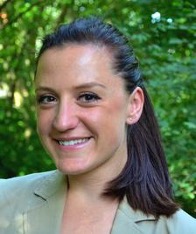
Maggie MacDonald (Honours) I am an Environmental Science major currently doing my honours and co-op work term with Delia pests in commercial onion. I am supervised by Dr. Kirk Hillier and Dr. Suzie Blatt from AAFC in Kentville. The objectives of my honours research are to evaluate the Delia species present in commercial onion fields and quantify the effect each species has on onion development. Results will provide onion growers with accurate information concerning Delia pest species that will lead to the development of pest management strategies to reduce economic loss in commercial onion. My interests revolve around crop and vegetable entomology, tree fruit entomology, IPM, and sustainable agriculture.
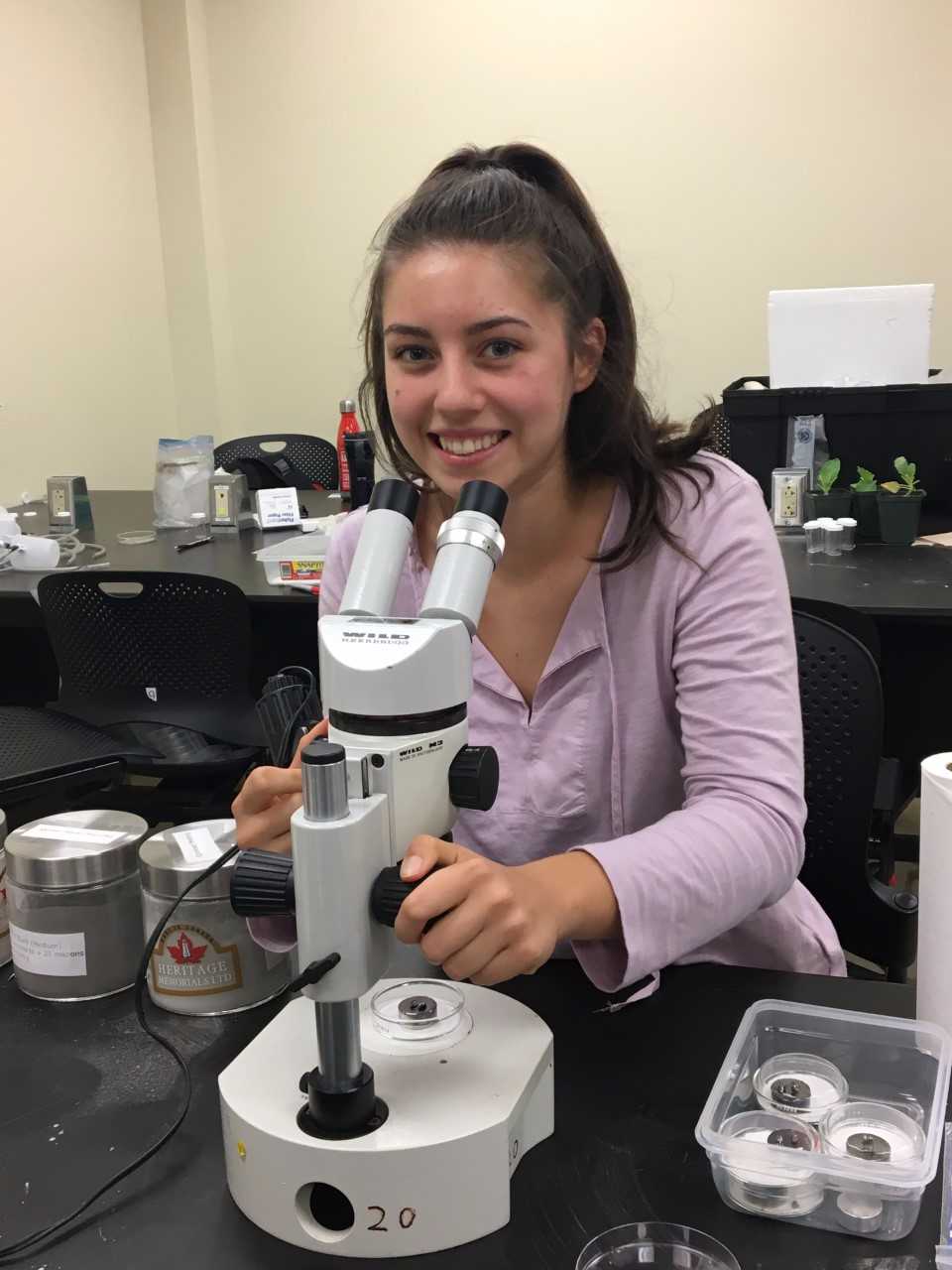
Samantha MacPherson (Honours) My research was on development of novel essential-oil based repellents for black legged ticks, using electrophysiology, chemistry and behavioral assays. I also worked as a part-time research assistant. I am assisting on the rock dust project, where we are developing an environmentally friendly alternative to synthetic insecticides.

Emily Evans (Honours) Mmily Evans (Honours) I completed my honours cosupervised by Kirk and Rodger Evans during the 2016-2017 academic year and continue to work through the summer of 2017 to extend my research and submit a manuscript based on my thesis. The purpose of my research was to decipher the mixed mating system of Crocantheumum canadense.Crocantheumum canadense, an endangered perennial herb in Nova Scotia which produces multiple flower types within a season. By comparing floral morphology between flower and assessing their ability to self-fertilize in the absence of insect pollinators, I could determine how each flower contributes to the genetic diversity of subsequent generations, either by inbreeding or outcrossing. Additionally, outcrossing flowers were infested by Mompha capella, a Lepidopteran moth which damages floral structures in a way that forced them to self-pollinate rather than outcross. I surveyed the C. canadense population to determine the infestation rate of outcrossing flowers and made predictions about the future survivability of endangered and infested Nova Scotian populations. This summer, I am investigating whether or not M. capella indirectly increases the production of selfing flowers later in the season in a field-based trial.
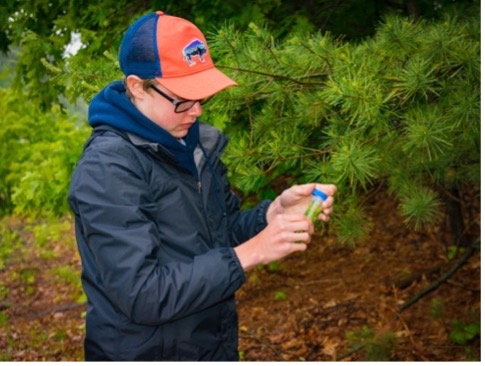
Adam Discher (Honours) Adam conducted research on Streptomyces bacterial metaoblites and their impact on insects. He had previously worked on the unique mechanisms and developmental effects of florivory by moth larvae, Mompha cappella Busck, on the endangered plant species Crocanthemum canadense better known as rockrose.

Rachel Clarke (Honours) After completing my third year in the Bachelor of Science program at Acadia with a major in Environmental Science. Currently, I am working on my Honours while completing my third co-op work term. My research focuses on methylmercury distribution in sediments, surface water, and freshwater insects from two lakes and their major tributary in Kejimkujik National Park, focusing mainly on caddisflies (Order Trichoptera) and mayflies (Order Ephemeroptera). This research could help quantify relationships between sediment and water mercury speciation and near-sediment aquatic invertebrates in Big Dam East Lake, Big Dam West Lake, and Thomas Meadow Brook in Kejimkujik Park.
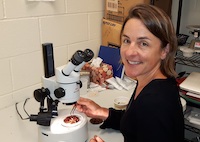
Lise Charbonneau, M.Sc., Biologist (Laboratory Technician) I am a former Masters student in Dave Shutler’s lab (co-supervised by Kirk Hillier). My M.Sc. research in honey bees investigated the effects of internal parasites, Nosema apis and Nosema ceranae, on honey bee learning and memory. I used PER (proboscis extension reflex) to evaluate learning and memory in bees infected with each species and co-infections.
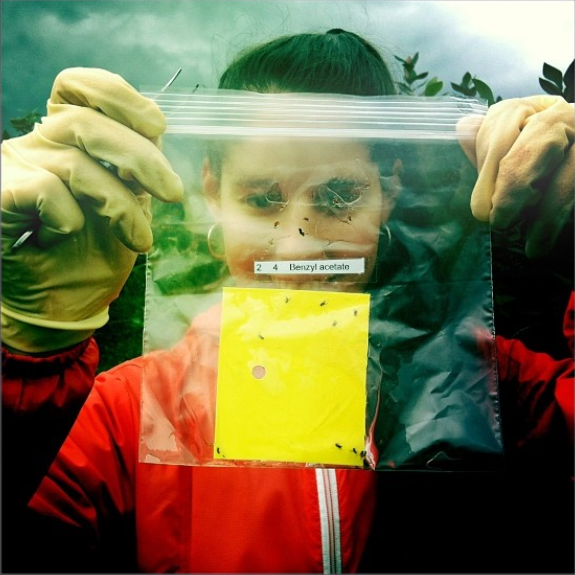
Lara Thomas (Honours, Lab Technician) I worked in the Hillier Lab as a lab technician and loved it! I have previously worked in the lab as both an honours and a co-op student. My research at that time, focused on lure development for Spotted Wing Drosophila, an invasive species of fruit fly posing a threat to Canada's fruit crop industry. I performed electroantennograms, flywalk trials and field trapping studies, in attempt to develop an early monitoring system for the species.
Colin MacKay, M.Sc., Biologist (Honours, M.Sc, Laboratory Technician) was a biologist with Acadia University/Canadian Forest Service (CFS) and based in Halifax, N.S. Colin is a former Honours and Masters student in Dr. Kirk Hillier’s lab (co-supervised by Dr. Jon Sweeney, CFS) where he worked on the antennal sensilla morphology and olfactory physiology of the brown spruce longhorn beetle (BSLB), Tetropium fuscum. Specifically, he identified the likely candidate sensilla for olfactory reception on the antennae of T. fuscum and then used single sensillum recording (SSR) to test the responsiveness and sensitivity of male and female T. fuscum to a range of compounds such as fuscumol (the aggregation pheromone for T. fuscum), host volatiles, and non-host volatiles. Colin is currently working with several different species of forest pests in N.S., but his main focus is on possible control measures of the invasive beach leaf mining weevil, Orchestes fagi.

Christopher Burgart (M. Sc. Cadidate) completed his undergraduate degree at Dalhousie University. His research is focused on cultivar preference in European apple sawflies and apple maggots and is being carried out at Acadia Univerisity and the Agri-Food and Horticultural Research Center in Kentville.

Jesse Saroli (M.Sc. Candidate) I’m currently working on developing a pheromone based control method for the blueberry flea beetle (Altica Sylvia), which is an important pest of the Maritime lowbush blueberry crop. I hope to be able to chemically identify any active pheromones used by Altica sylvia for possible future use in traps as a monitoring and control method. I’m working towards this goal by completing field and lab bioassays and pheromone composition identification in the lab with the help of Gas-Chromatography Mass-Spectrometry.

Rebecca Rizzato (M.Sc Candidate) The goal of my research is to examine the evolution and divergence of olfaction in heliothine moths. Heliothine moths are notorious crop pests in North America and around the world, feeding on a variety of plants such as corn, cotton, and tobacco. My research involves using a comparative approach combining behavioural, genetic, anatomical, and physiological techniques to examine the mechanisms in which pheromone production and detection may have evolved and diverged within the heliothine group. The findings of my research could potentially contribute to a global initiative to find new strategies for pest monitoring and management.

Heather Crozier (M. Sc. Candidate) I am from Bible Hill, Nova Scotia, and have attended St. Francis Xavier University where I obtained a B.Sc in Biology, then I attended the former Nova Scotia Agricultural College, and graduated from Dalhousie University Faculty of Agriculture with a B.Sc Agr. in Environmental Science, where I published my undergrad research on the Susceptibility of Chrysochus auratus, a natural enemy of spreading dogbane, to insecticides used in wild blueberry production. My research is on the effects of odorants from cultivars of highbush blueberry on Drosophila suzukii (Diptera: Drosophilidea), which is a relatively new insect pest to this region.

Loay Jabre (M. Sc. Candidate) Loay Jabre is a Masters student investigating the interaction between the cabbage maggot, Delia radicum, and its host plants. He is using electroantennogram technology and bioassays to understand the relationship between the fly and its host plant volatiles as well as field studies to examine possible eco-friendly monitoring traps for this pest.

Rylee Isitt (M. Sc. Candidate) I did my B.Sc. in biology at the University of Northern British Columbia (UNBC), and am currently a master's student at UNBC co-supervised by Dr. Dezene Huber and Dr. Kathy Bleiker. I am studying the geographical variation in pheromone blends between eastern and western populations of the spruce beetle (Dendroctonus rufipennis). Spruce beetles use pheromones to attract mates and for coordinating mass attacks on host trees. Forestry professionals can take advantage of these pheromones to lure spruce beetles into traps as a way of managing beetle outbreaks. By better understanding if and how spruce beetle pheromones differ across North America, more efficient lures might be formulated. Although British Columbia is my home province, I have come to Acadia University to work with eastern populations of spruce beetle. Other interests of mine include macrophotography, electronics, software engineering, and other similarly geeky pursuits.

Simon Pawlowski (M. Sc. Candidate) I completed my undergraduate degree in 2014 here at Acadia and am currently continuing on my Honour’s work on Orchestes fagi (Coleoptera: Curculionidae). Alongside the Canadian Forest Service, my project aims at developing effective monitoring tools for this invasive pest of beech trees in Nova Scotia. I have also done research with the Fundy Ocean Research Centre for Energy on harbour porpoises in the Minas Passage.

Alyson Carter (M. Sc Candidate) I completed my undergrad in Environmental Horticulture in 2013 from Dalhousie Agricultural campus. I have since completed a work term at CABI - Europe - Switzerland in pest biological control working with Cabagge Seedpod Weevil (C. obstrictus) using parasitoids T. perfectus and M. morys. I also completed a work term at AAFC-Lethbridge on biological weed control of Japanese Knotweed and other knotweeds using the psyllid A. idatori. These experiences were wonderful, eye opening and exciting and helped me land a Masters position at Acadia University. My Masters is focused on creating plant volatile profiles on blueberry cultivars to help enhance our knowledge of blueberry pests, plant defenses and help create a better IPM program for blueberry cultivation.

Melissa McGuire (Honours Student) I am working on my Honours this summer with Kirk and the team! My main focus includes the evaluation of the survivorship and fitness of larval progeny from non-choice mating assays and mate choice by conspecfic females in relation to hairpencil compound composition released by males. I have investigated mating behaviour of Heliothis virescens and Helicoverpa zea that are both growing concerns for agriculture success in North America. I will be starting my fourth year at Acadia University this fall and plan to be completed this project and graduating in the spring of 2015.
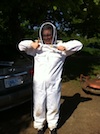
Rylee Oosterhuis (Honours Student) I have completed my third year in the Bachelor of Science program at Acadia University with a double major in Biology and Chemistry. I am currently working on my Honours in Biology and concurrently completing my first co-op term in the Hillier lab. My research focuses on identifying potential attractants of Varroa destructor mites, a parasite of honeybees, based upon pheromones produced by honeybees. The goal is to identify and synthesize semiochemical analogues similar to those produced by honeybees which will attract V. destructor but not disrupt normal honeybee behaviour. These analogues could have broader applications to control mite infestations and provide an alternative to existing miticides.

Mark Hanes (Honours) My research focus is to develop techniques to easily identify, monitor, and trap Varroa destructor mites within hives of the western honey bee (Apis mellifera). One major area of exploration is to develop odorant lure-based Varroa mite traps that do not fundamentally influence honey bee behaviour. Identifying volatile organic compounds (VOCs) specific to mite-infested honey bee colonies is also under investigation. Monitoring certain VOCs and their concentrations could potentially aid apiculturists in identifying mite-infested hives.

Matt Nunn (Honours) completed his honours thesis investigating “Pheromones of the Red-Striped Fireworm”, and simultaneously completed a side project to examine leafhopper diversity in wild Nova Scotian blueberry fields.




